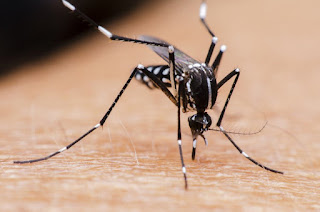Novel technique to implant high-performance magnetic memory chip on a flexible plastic surface without compromising performance
It looks like a small piece of transparent
film with tiny engravings on it, and is flexible enough to be bent into a
tube. Yet, this piece of "smart" plastic demonstrates excellent
performance in terms of data storage and processing capabilities. This
novel invention, developed by researchers from the National University
of Singapore (NUS), hails a breakthrough in the flexible electronics
revolution, and brings researchers a step closer towards making
flexible, wearable electronics a reality in the near future.
The technological advancement is achieved in collaboration with
researchers from Yonsei University, Ghent University and Singapore's
Institute of Materials Research and Engineering. The research team has
successfully embedded a powerful magnetic memory chip on a flexible
plastic material, and this malleable memory chip will be a critical
component for the design and development of flexible and lightweight
devices. Such devices have great potential in applications such as
automotive, healthcare electronics, industrial motor control and
robotics, industrial power and energy management, as well as military
and avionics systems.
The research team, led by Associate Professor Yang Hyunsoo of the Department of Electrical and Computer Engineering at the NUS Faculty of Engineering, published their findings in the journal Advanced Materials on 6 July 2016.
Flexible, high-performance memory devices a key enabler for flexible electronics
Flexible electronics has become the subject of active research in recent times. In particular, flexible magnetic memory devices have attracted a lot of attention as they are the fundamental component required for data storage and processing in wearable electronics and biomedical devices, which require various functions such as wireless communication, information storage and code processing.
Although a substantial amount of research has been conducted on different types of memory chips and materials, there are still signi?cant challenges in fabricating high performance memory chips on soft substrates that are flexible, without sacri?cing performance.
To address the current technological challenges, the research team, led by Assoc Prof Yang, developed a novel technique to implant a high-performance magnetic memory chip on a flexible plastic surface.
The novel device operates on magnetoresistive random access memory (MRAM), which uses a magnesium oxide (MgO)-based magnetic tunnel junction (MTJ) to store data. MRAM outperforms conventional random access memory (RAM) computer chips in many aspects, including the ability to retain data after a power supply is cut off, high processing speed, and low power consumption.
Novel technique to implant MRAM chip on a flexible plastic surface
The research team first grew the MgO-based MTJ on a silicon surface, and then etched away the underlying silicon. Using a transfer printing approach, the team implanted the magnetic memory chip on a ?exible plastic surface made of polyethylene terephthalate while controlling the amount of strain caused by placing the memory chip on the plastic surface.
Assoc Prof Yang said, "Our experiments showed that our device's tunneling magnetoresistance could reach up to 300 per cent -- it's like a car having extraordinary levels of horsepower. We have also managed to achieve improved abruptness of switching. With all these enhanced features, the flexible magnetic chip is able to transfer data faster."
Commenting on the significance of the breakthrough, Assoc Prof Yang said, "Flexible electronics will become the norm in the near future, and all new electronic components should be compatible with flexible electronics. We are the first team to fabricate magnetic memory on a flexible surface, and this significant milestone gives us the impetus to further enhance the performance of flexible memory devices and contribute towards the flexible electronics revolution."
Assoc Prof Yang and his team were recently granted United States and South Korea patents for their technology. They are conducting experiments to improve the magnetoresistance of the device by fine-tuning the level of strain in its magnetic structure, and they are also planning to apply their technique in various other electronic components. The team is also interested to work with industry partners to explore further applications of this novel technology.
The research team, led by Associate Professor Yang Hyunsoo of the Department of Electrical and Computer Engineering at the NUS Faculty of Engineering, published their findings in the journal Advanced Materials on 6 July 2016.
Flexible, high-performance memory devices a key enabler for flexible electronics
Flexible electronics has become the subject of active research in recent times. In particular, flexible magnetic memory devices have attracted a lot of attention as they are the fundamental component required for data storage and processing in wearable electronics and biomedical devices, which require various functions such as wireless communication, information storage and code processing.
Although a substantial amount of research has been conducted on different types of memory chips and materials, there are still signi?cant challenges in fabricating high performance memory chips on soft substrates that are flexible, without sacri?cing performance.
To address the current technological challenges, the research team, led by Assoc Prof Yang, developed a novel technique to implant a high-performance magnetic memory chip on a flexible plastic surface.
The novel device operates on magnetoresistive random access memory (MRAM), which uses a magnesium oxide (MgO)-based magnetic tunnel junction (MTJ) to store data. MRAM outperforms conventional random access memory (RAM) computer chips in many aspects, including the ability to retain data after a power supply is cut off, high processing speed, and low power consumption.
Novel technique to implant MRAM chip on a flexible plastic surface
The research team first grew the MgO-based MTJ on a silicon surface, and then etched away the underlying silicon. Using a transfer printing approach, the team implanted the magnetic memory chip on a ?exible plastic surface made of polyethylene terephthalate while controlling the amount of strain caused by placing the memory chip on the plastic surface.
Assoc Prof Yang said, "Our experiments showed that our device's tunneling magnetoresistance could reach up to 300 per cent -- it's like a car having extraordinary levels of horsepower. We have also managed to achieve improved abruptness of switching. With all these enhanced features, the flexible magnetic chip is able to transfer data faster."
Commenting on the significance of the breakthrough, Assoc Prof Yang said, "Flexible electronics will become the norm in the near future, and all new electronic components should be compatible with flexible electronics. We are the first team to fabricate magnetic memory on a flexible surface, and this significant milestone gives us the impetus to further enhance the performance of flexible memory devices and contribute towards the flexible electronics revolution."
Assoc Prof Yang and his team were recently granted United States and South Korea patents for their technology. They are conducting experiments to improve the magnetoresistance of the device by fine-tuning the level of strain in its magnetic structure, and they are also planning to apply their technique in various other electronic components. The team is also interested to work with industry partners to explore further applications of this novel technology.
Story Source:
The above post is reprinted from materials provided by National University of Singapore. Note: Materials may be edited for content and length.
Source: sciencedaily
The above post is reprinted from materials provided by National University of Singapore. Note: Materials may be edited for content and length.
Source: sciencedaily


















